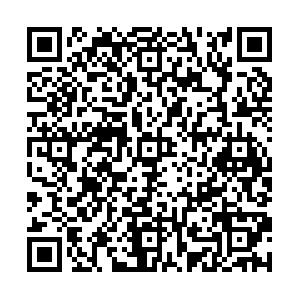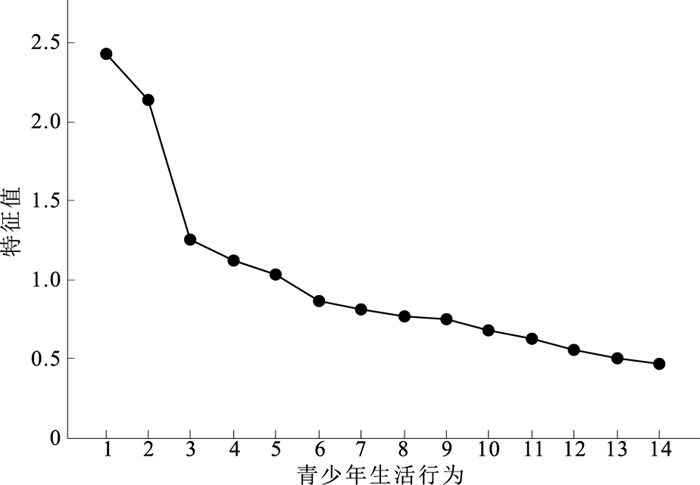Association between parents' health literacy and health risk behaviors of middle school students in northeast Jiangxi Province
-
摘要:
目的 探究父母健康素养与中学生健康危险行为的关联,为提高父母健康素养和减少中学生健康危险行为提供理论依据。 方法 采取多阶段分层随机抽样的方法,于2020年6—9月对江西省东北区域1 993名中学生及其父母进行电子化问卷调查,使用Spearman相关分析父母健康素养与中学生5类不健康行为的相关性。使用广义线性模型分析父母健康素养评分与中学生5类健康危险行为的关联。 结果 广义线性模型分析显示,调整家庭经济状况等变量后父母健康素养与中学生健康危险行为关联,科学健康观(β=-0.05,95%CI=-0.09~-0.01)、健康信息素养(β=-0.06,95%CI=-0.08~-0.05)均与中学生物质滥用与暴力行为关联;健康信息素养与中学生健康饮食行为(β=-0.03,95%CI=-0.04~-0.01)、中学生运动与早餐(β=-0.03,95%CI=-0.05~-0.02)关联;慢性病防治素养(β=0.05,95%CI=0.00~0.09)、健康信息素养(β=-0.02,95%CI=-0.03~-0.00)与中学生视屏行为关联;科学健康观(β=-0.05,95%CI=-0.09~-0.01)、基本医疗素养(β=-0.08,95%CI=-0.13~-0.04)、健康信息素养(β=0.02,95%CI=0.00~0.03)均与中学生交通安全行为关联(P值均 < 0.05)。 结论 父母健康素养与中学生健康危险行为之间存在一定的关联,需要在队列研究中明确关联的方向和强度。 Abstract:Objective To explore the association between parents' health literacy and health risk behaviors of middle school students, so as to provide theoretical basis for parental health literacy improvement and adolescent health risk behaviors prevention. Methods A questionnaire survey was conducted among 1 993 middle school students and their parents in northeast Jiangxi Province by multistage stratified random sampling during Jun. to Sept. of 2020. Spearman correlation and generalized linear model were used to explore association between parents health literacy with 5 types of unhealthy behaviors. Results Generalized linear model analysis showed that after adjusting household economic status and other covariates, parents' health literacy was associated with adolescent health risk behaviors, and the scientific health view (β=-0.05, 95%CI=-0.09--0.01), health information literacy (β=-0.06, 95%CI=-0.08--0.05) were associated with substance abuse and violence among middle school students; health information literacy (β=-0.03, 95%CI=-0.04--0.01) was associated with adolescent healthy eating behavior; health information literacy (β=-0.03, 95%CI=-0.05--0.02) was associated with breakfast and exercise in middle school students; chronic disease literacy (β=0.05, 95%CI=0.00-0.09), health information literacy (β=-0.02, 95%CI=-0.03--0.00) was associated with screen-related behavior of middle school students; scientific health view (β=-0.05, 95%CI=-0.09--0.01), basic medical literacy (β=-0.08, 95%CI=-0.13--0.04), health information literacy (β=0.02, 95%CI=0.00-0.03) were associated with middle school students' traffic safety behavior(P < 0.05). Conclusion There is a certain cross-sectional correlation between parents' health literacy and adolescent health risk behaviors. It is necessary to clarify the direction and intensity of the correlation in the cohort study. -
Key words:
- Health education /
- Dangerous behavior /
- Legal guardians /
- Linear models /
- Students
1) 利益冲突声明 所有作者声明无利益冲突。 -
表 1 中学生健康危险行为旋转后因子载荷矩阵
Table 1. Factor load matrix of middle school students' health risk behavior after rotation
健康危险行为 行为1 行为2 行为3 行为4 行为5 吃水果 0.01 0.77 0.08 -0.03 -0.16 吃蔬菜 0.04 0.70 0.17 0.02 0.12 喝可乐 0.52 -0.31 0.07 0.19 0.06 喝牛奶 -0.08 0.71 0.04 0.00 -0.11 吃早餐 0.18 0.18 0.45 0.17 0.18 体力活动 -0.15 0.10 0.77 -0.07 -0.18 体育锻炼 -0.02 0.05 0.83 -0.03 -0.10 看电视 0.19 -0.04 -0.01 0.78 0.07 使用手机或电脑 0.11 0.03 0.03 0.83 -0.08 骑车戴头盔 0.08 -0.01 0.02 0.02 0.79 乘车系安全带 -0.10 -0.14 -0.15 -0.03 0.69 打架 0.75 -0.02 0.00 0.11 -0.05 抽烟 0.69 0.11 -0.03 -0.06 -0.01 喝酒 0.72 0.00 -0.06 0.25 0.02 表 2 父母健康素养与中学生健康危险行为方式相关性(r值,n=1 993)
Table 2. Correlation between parents' health literacy and health risk behaviors of middle school students(r, n=1 993)
变量 中学生物质
滥用与暴力
行为中学生健康
饮食行为中学生运
动与早餐中学生
视屏行为中学生交通
安全行为父母科学
健康观父母传染病
防治素养父母慢性病
防治素养父母安全与
急救素养父母基本
医疗素养中学生健康危险行为 健康饮食行为 0.18** 运动与早餐 0.10** -0.02 视屏行为 0.00 0.23** -0.19** 交通安全行为 -0.11** 0.00 -0.03 0.05* 父母健康素养 科学健康观 -0.19** -0.14** -0.10** -0.12** 0.02 传染病防治素养 -0.10** -0.11** -0.09** -0.08** 0.01 0.25** 慢性病防治素养 -0.20** -0.17** -0.10** -0.11** 0.05* 0.54** 0.28** 安全与急救素养 -0.14** -0.14** -0.09** -0.10** 0.06** 0.48** 0.20** 0.56** 基本医疗素养 -0.19** -0.14** -0.09** -0.11** -0.05* 0.54** 0.28** 0.54** 0.48** 健康信息素养 -0.16** -0.15** -0.08** -0.11** 0.07** 0.50** 0.25** 0.56** 0.49** 0.52** 注:*P < 0.05,**P < 0.01。 表 3 父母健康素养与中学生健康危险行为的关联(n=1 993)
Table 3. Association between parents' health literacy of parents and health risk behaviors of middle school students(n=1 993)
因变量 自变量 模型1 模型2 β值(β值95%CI) 标准误 P值 β值(β值95%CI) 标准误 P值 物质滥用与 科学健康观 -0.06(-0.10~-0.02) 0.02 0.01 -0.05(-0.09~-0.01) 0.02 0.01 暴力行为 传染病防治素养 0.01(-0.04~0.06) 0.03 0.79 0.01(-0.04~0.06) 0.03 0.65 慢性病防治素养 0.00(-0.04~0.04) 0.02 0.98 0.00(-0.04~0.04) 0.02 0.98 安全与急救素养 0.00(-0.04~0.05) 0.02 0.85 0.00(-0.04~0.05) 0.02 0.87 基本医疗素养 -0.02(-0.06~0.03) 0.02 0.47 -0.01(-0.06~0.03) 0.02 0.62 健康信息素养 -0.07(-0.08~-0.06) 0.01 < 0.01 -0.06(-0.08~-0.05) 0.01 < 0.01 健康饮食行为 科学健康观 0.00(-0.04~0.04) 0.02 0.94 0.00(-0.04~0.04) 0.02 0.84 传染病防治素养 -0.03(-0.08~0.03) 0.03 0.36 -0.04(-0.09~0.01) 0.03 0.16 慢性病防治素养 -0.03(-0.08~0.01) 0.02 0.15 -0.03(-0.08~0.01) 0.02 0.12 安全与急救素养 -0.01(-0.05~0.04) 0.02 0.79 -0.01(-0.05~0.03) 0.02 0.64 基本医疗素养 -0.02(-0.07~0.03) 0.02 0.40 -0.03(-0.07~0.02) 0.02 0.27 健康信息素养 -0.04(-0.05~-0.03) 0.01 < 0.01 -0.03(-0.04~-0.01) 0.01 < 0.01 运动与早餐 科学健康观 -0.02(-0.06~0.03) 0.02 0.49 -0.02(-0.06~0.02) 0.02 0.30 传染病防治素养 0.01(-0.04~0.06) 0.03 0.70 -0.01(-0.07~0.04) 0.03 0.59 慢性病防治素养 0.01(-0.04~0.05) 0.02 0.81 -0.01(-0.05~0.04) 0.02 0.77 安全与急救素养 0.02(-0.03~0.07) 0.02 0.39 0.02(-0.03~0.06) 0.02 0.43 基本医疗素养 0.01(-0.04~0.06) 0.02 0.66 0.00(-0.05~0.05) 0.02 0.97 健康信息素养 -0.03(-0.05~-0.02) 0.01 < 0.01 -0.03(-0.05~-0.02) 0.01 < 0.01 视屏行为 科学健康观 0.00(-0.04~0.05) 0.02 0.88 0.01(-0.03~0.05) 0.02 0.59 传染病防治素养 -0.03(-0.08~0.03) 0.03 0.35 -0.03(-0.08~0.02) 0.03 0.26 慢性病防治素养 0.05(0.00~0.09) 0.02 0.04 0.05(0.00~0.09) 0.02 0.03 安全与急救素养 0.00(-0.05~0.04) 0.02 0.87 -0.01(-0.05~0.04) 0.02 0.77 基本医疗素养 0.03(-0.02~0.08) 0.02 0.22 0.03(-0.01~0.08) 0.02 0.17 健康信息素养 -0.03(-0.04~-0.01) 0.01 < 0.01 -0.02(-0.03~-0.00) 0.01 0.01 交通安全行为 科学健康观 -0.06(-0.10~-0.02) 0.02 0.01 -0.05(-0.09~-0.01) 0.02 0.01 传染病防治素养 -0.06(-0.11~-0.00) 0.03 0.04 -0.04(-0.09~0.01) 0.03 0.13 慢性病防治素养 -0.03(-0.07~0.02) 0.02 0.19 -0.03(-0.07~0.02) 0.02 0.25 安全与急救素养 -0.01(-0.05~0.04) 0.02 0.69 -0.01(-0.05~0.04) 0.02 0.84 基本医疗素养 -0.09(-0.14~-0.05) 0.02 < 0.01 -0.08(-0.13~-0.04) 0.02 < 0.01 健康信息素养 0.02(0.01~0.03) 0.01 < 0.01 0.02(0.00~0.03) 0.01 0.01 注:模型1未调整变量;模型2调整了性别、年龄、民族、年级、家庭居住地、就读类型、父母亲职业、父母亲学历、家庭经济状况等变量。 -
[1] 季成叶. 儿童少年卫生学[M]. 北京: 人民卫生出版社, 2009: 249-264.JI C Y. Hygiene of children and adolescents[M]. Beijing: People's Medical Publishing House, 2009: 249-264. [2] World Health Organization. Health for the world's adolescents: a second chance in the second decade[EB/OL]. (2016-08-01)[2020-05-04]. http://www.who.int/adolescent/second-decade.html. [3] 彭波. 欠发达地区青少年健康危险行为现状与健康促进对策研究[D]. 南充: 西华师范大学, 2016.PENG B. Health risk behaviors and health promotion strategies for adolescents in less developed areas[D]. Nanchong: China West Normal University, 2016. [4] 陈燕. 青少年亲子依恋、心理韧性与问题行为的关系[D]. 济南: 山东师范大学, 2019.CHEN Y. The relationship between parent-child attachment, psychological resilience and problem behavior in adolescents[D]. Jinan: Shandong Normal University, 2019. [5] 唐雯, 李晓松, 潘杰. 我国青少年吸烟行为的代际传递研究[J]. 四川大学学报(医学版), 2014, 45(2): 262-265. https://www.cnki.com.cn/Article/CJFDTOTAL-HXYK201402019.htmTANG W, LI X S, PAN J. Parental smoking and adolescent smoking: the intergenerational transmission of health-risk behaviors[J]. J Sichuan Univ(Med Sci Edi), 2014, 45(2): 262-265. https://www.cnki.com.cn/Article/CJFDTOTAL-HXYK201402019.htm [6] BOYD D T, OPARA L, QUINN C R, et al. Associations between parent-child communication on sexual health and drug and use of drugs during sex among urban black youth[J]. Int J Environ Res Public Health, 2021, 18(10): 252-271. [7] SAUDER K A, RITCHIE N D. Reducing intergenerational obesity and diabetes risk[J]. Int J Occupat Environ Med, 2021, 64(3): 481-490. [8] EYAL K, BURNS J. The parent trap: cash transfers and the intergenerational transmission of depressive symptoms in South Africa[J]. World Dev, 2019, 117: 211-229. doi: 10.1016/j.worlddev.2019.01.014 [9] 杜修本, 韩铁光, 荆春霞, 等. 全国居民健康素养监测快速评估调查问卷(HLSRAQ)的构建与验证[J]. 健康教育与健康促进, 2019, 14(4): 310-313. https://www.cnki.com.cn/Article/CJFDTOTAL-JYCJ201904009.htmDU X B, HAN T G, JING C X, et al. Construction and verification of the national residents' Health Literacy Surveillance Rapid Assessment Questionnaire(HLSRAQ)[J]. Health Educ Health Promot, 2019, 14(4): 310-313. https://www.cnki.com.cn/Article/CJFDTOTAL-JYCJ201904009.htm [10] 国家卫生和计划委员会. 中国公民健康素养-基本知识与技能(2015年版)[M]. 北京: 人民卫生出版社, 2017.National Health and Family Planning Commission of PRC. Health literacy of Chinese citizens: basic knowledge and skills(2015 Edition)[M]. Beijing: People's Medical Publishing House, 2017. [11] 聂雪琼, 李英华, 李莉. 2012年中国居民健康素养监测数据统计分析方法[J]. 中国健康教育, 2014, 30(2): 178-181. https://www.cnki.com.cn/Article/CJFDTOTAL-ZGJK201402026.htmNIE X Q, LI Y H, LI L. Statistic analysis of 2012 Chinese residents health literacy monitoring[J]. Chin J Health Educ, 2014, 30(2): 178-181. https://www.cnki.com.cn/Article/CJFDTOTAL-ZGJK201402026.htm [12] RUNTON N G, HUDAK R P. The influence of school-based health centers on adolescents' youth risk behaviors[J]. J Pediatr Health Care, 2016, 30(3): 1-9. doi: 10.1016/j.pedhc.2015.07.005 [13] KANN L, MCMANUS T, HARRIS W A, et al. Youth risk behavior surveillance: United States, 2017[J]. MMWR Surveill Summ, 2018, 67(8): 1-114. doi: 10.15585/mmwr.ss6708a1 [14] 李春玫. 江西省某县一中学高中生健康危险行为现况及其影响因素研究[D]. 南昌: 南昌大学, 2018.LI C M. A research on the current situation and influencing factors of health risk behaviors among one high school students in one county in Jiangxi Province[D]. Nanchang: Nanchang University, 2018. [15] 谈甜, 和红. 家庭健康循环视角下的健康代际传递研究: 基于CHNS 2015的实证分析[J]. 中国卫生政策研究, 2021, 14(1): 50-58. doi: 10.3969/j.issn.1674-2982.2021.01.008TAN T, HE H. Intergenerational transmission of health from the perspective of family health cycle: an empirical analysis based on CHNS 2015[J]. Chin J Health Policy, 2021, 14(1): 50-58. doi: 10.3969/j.issn.1674-2982.2021.01.008 [16] SUMODHEE D, PAYNE N. Healthy eating beliefs and intention of mothers and their adult children: an intergenerational transmission perspective[J]. J Health Psychol, 2016, 21(12): 2775-2787. doi: 10.1177/1359105315586214 [17] 谢东虹, 朱志胜. 健康的同群效应及其机制研究[J]. 南方人口, 2020, 35(2): 39-51. doi: 10.3969/j.issn.1004-1613.2020.02.005XIE D H, ZHU Z S. Study on the peer effect of health and its mechanism[J]. South China Popul, 2020, 35(2): 39-51. doi: 10.3969/j.issn.1004-1613.2020.02.005 [18] 张士靖, 杜建. 健康信息素养应成为中国公众健康素养促进的关键点[J]. 医学信息学杂志, 2010, 31(2): 45-49. doi: 10.3969/j.issn.1673-6036.2010.02.012ZHANG S J, DU J. Health information literacy should become the critical point of health literacy promotion for the Chinese public[J]. J Med Inform, 2010, 31(2): 45-49. doi: 10.3969/j.issn.1673-6036.2010.02.012 [19] 刘丹. 基于信息贫困理论的青少年信息行为浅析[J]. 时代金融, 2020(3): 138-140. https://www.cnki.com.cn/Article/CJFDTOTAL-YNJR202003064.htmLIU D. Analysis of teenagers' information behavior based on the theory of information poverty[J]. Times Financ, 2020(3): 138-140. https://www.cnki.com.cn/Article/CJFDTOTAL-YNJR202003064.htm [20] 刘懿璇, 高原. 健康信念与知识素养: 公众媒介实践对健康行为影响: 基于自我效能感为调节变量的实证研究[J]. 湖北科技学院学报, 2021, 41(2): 99-106. doi: 10.3969/j.issn.1006-5342.2021.02.019LIU Y X, GAO Y. Health belief and knowledge literacy: the impact of public media practice on health behavior: an empirical study based on self efficacy as a moderator[J]. J Hubei Univ Sci Technol, 2021, 41(2): 99-106. doi: 10.3969/j.issn.1006-5342.2021.02.019 [21] VOLLAND B. On the intergenerational transmission of preferences[J]. J Bioeconom, 2013, 15(3): 217-249. doi: 10.1007/s10818-012-9149-x [22] 吴剑, 吴瑞珠. 福建省高校体育教育专业大学生科学健康观素养水平调查及教育对策建议[J]. 现代医学与健康研究电子杂志, 2019, 3(22): 128-130. https://www.cnki.com.cn/Article/CJFDTOTAL-XYJD201922059.htmWU J, WU R Z. Investigation on the scientific health concept literacy level of college students naforing in physical education in Fujian province and educational countermeasures[J]. Modern Med Health Res, 2019, 3(22): 128-130. https://www.cnki.com.cn/Article/CJFDTOTAL-XYJD201922059.htm [23] 崔元起, 楼超华. 青少年社会资本与健康危险行为关联的综述[J]. 中国健康教育, 2019, 35(12): 1117-1121. https://www.cnki.com.cn/Article/CJFDTOTAL-ZGJK201912016.htmCUI Y Q, LOU C H. A review of the association between adolescent social capital and health risk behaviors[J]. Chin J Health Educ, 2019, 35(12): 1117-1121. https://www.cnki.com.cn/Article/CJFDTOTAL-ZGJK201912016.htm [24] FULKERSON J A, STORY M, MELLIN A, et al. Family dinner meal frequency and adolescent development: relationships with developmental assets and high-risk behaviors[J]. J Adolesc Health, 2006, 39(3): 337-345. doi: 10.1016/j.jadohealth.2005.12.026 [25] 薛海平, 李静. 家庭资本、影子教育与社会再生产[J]教育经济评论, 2016, 1(4): 60-81. https://www.cnki.com.cn/Article/CJFDTOTAL-JYJP201604005.htmXUE H P, LI J. Family capital, shadow education and social reproduction[J]China Econom Educ Rev, 2016, 1(4): 60-81. https://www.cnki.com.cn/Article/CJFDTOTAL-JYJP201604005.htm [26] 安美静, 陈天娇, 马军. 父母因素对儿童青少年视屏时间的影响及其性别差异[J]. 中国学校卫生, 2019, 40(2): 202-205. doi: 10.16835/j.cnki.1000-9817.2019.02.012AN M J, CHEN T J, MA J. Parental influences on screen time among children and adolescents and associated gender disparity[J]. Chin J Sch Health, 2019, 40(2): 202-205. doi: 10.16835/j.cnki.1000-9817.2019.02.012 [27] 王丽, 秦鹏, 林洁丽, 等. 大连市中小学生慢性病健康素养调查分析[J]. 中国医科大学学报, 2018, 47(2): 107-110. https://www.cnki.com.cn/Article/CJFDTOTAL-ZGYK201802003.htmWANG L, QIN P, LIN J L, et al. Analysis of chronic disease prevention literacy among primary and secondary school students in Dalian[J]. J Chin Med Univ, 2018, 47(2): 107-110. https://www.cnki.com.cn/Article/CJFDTOTAL-ZGYK201802003.htm [28] JAGO R, SEBIRE S J, EDWARDS M J, et al. Parental TV viewing, parental self-efficacy, media equipment and TV viewing among preschool children[J]. Eur J Pediatr, 2013, 172(11): 1543-1545. doi: 10.1007/s00431-013-2077-5 [29] 韦冬梅, 吴丽晶, 高爱钰, 等. 儿童视屏行为和家庭相关因素与儿童体重指数的关系[J]. 北京大学学报(医学版), 2015, 47(3): 390-394. doi: 10.3969/j.issn.1671-167X.2015.03.005WEI D M, WU L J, GAO A Y, et al. Study on the relations among the screen-based sedentary behaviors, family factors and body mass index of children[J]. J Peking Univ(Health Sci), 2015, 47(3): 390-394. doi: 10.3969/j.issn.1671-167X.2015.03.005 -







 下载:
下载:

